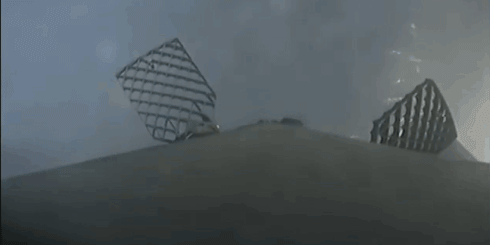
The launch of an unmanned SpaceX Falcon 9 didn’t go quite as planned on Wednesday.
The rocket lifted off successfully at 1:16 p.m. ET from Florida’s Cape Canaveral Air Force Station, but after successfully propelling the cargo-laden Dragon capsule on its way to the International Space Station, the spent rocket malfunctioned on its return to Earth and missed its landing site.
“Grid fin hydraulic pump stalled, so Falcon landed just out to sea,” SpaceX CEO Elon Musk tweeted shortly after the anomaly. “Appears to be undamaged & is transmitting data. Recovery ship dispatched.”
SpaceX was attempting to land the Falcon 9 rocket’s spent first stage at a pad along the Cape Canaveral coast called “Landing Zone 1.” Several minutes after liftoff, the rocket’s first stage separated as normal, but as that booster part maneuvered into position for landing, it appeared to lose control and started spinning.
Musk confirmed that the rocket splashed down in the ocean, suggesting that there was an issue with one of the booster’s so-called grid fins, which look like lattice pedals attached to the side of a rocket that help steer the booster during precision landings.
“Engines stabilized rocket spin just in time, enabling an intact landing in water! Ships en route to rescue Falcon,” Musk said in a subsequent tweet.
While the Falcon 9’s first stage didn’t nail its landing, the Dragon capsule reached orbit and is en route to the space station. The capsule is loaded with more than 5,600 pounds of supplies and science experiments for the orbiting outpost.
























